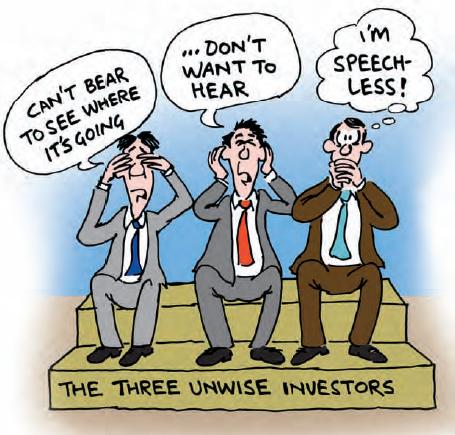Don’t let the Sensex Guide Your Senses!
Investors generally form their views on equities by looking at the movement of the BSE Sensex. When they see Sensex rising towards the green territory everyone runs to buy thinking that they are missing on gains and the same happens when the Sensex shows sharp dips. They discuss among themselves and friends that it is better to stay away from equities.
The devotees of equities share a different picture; they argue that whatever be the situation, equities yield superior returns over a long term. But the sceptics highlight that the Sensex crossed 4,600 a long time back in 1992. It has since gone up and down several times. For example, in January 2005 the Sensex was trading at around 6,600 and one could say that a close to 44% increase over a period of 12 years (around 3% per annum) wasn’t much to show for the last 12 years – surely this is long enough for the market to have delivered the superior performance it is capable of. (Data Source: BSE)
The fact is that an equity market is much more than a benchmark index. The BSE Sensex represents only 30 actively traded large companies in the market. Apart from this index offering only 30 stocks, the Indian equity market offers an immense variety of other investment opportunities also, which are clearly ignored by the investors. Active equity fund managers have demonstrated that they can look beyond the index and spot various companies that can deliver much better returns for the investors as compared to the returns from Sensex. The graph below shows the compounded annualized growth of the BSE Sensex, compared to the returns from actively managed funds over five different periods up to ten years.

Over all these periods, the actively managed funds have clearly outperformed the Sensex as a whole. This is the benefit of active management. The Active fund managers make their own decisions about which shares to buy in the funds’ portfolio. Some of these managers use statistical analysis; others follow fashion.
Difference between a passive or index-tracking fund and an actively managed fund
A good active fund manager will choose stocks on the basis of thorough research, seeking companies with the potential to reward their investors. Passive or index-tracking funds, on the other hand, attempt to replicate an index, such as the Sensex, by holding the same stocks and in the same proportions. Investment decisions are often made by computers and no research is involved so these funds usually have lower charges. When you invest in actively managed equity funds your returns are dependent on the stock selection skills of the fund manager. Active management has worked well in the Indian market and there appears to be no reason why it should not continue working as well in the future.

A passive or index-tracking fund holds stocks not because they’re worth investing in, but because they’re in the index. And it has to hold them as long as they stay in the index, even if they are over-priced or are even not performing as desired. An actively managed fund, on the other hand, holds a stock because the fund manager wants it in the portfolio. Your Investment advisor will be able to help you select actively managed equity funds that are right for your particular circumstances and goals. You’ll be investing in equities without having to worry about where the Sensex is, or where it’s likely to go.
What is your opinion regarding investing in the Stock markets. How should one go about investing? Please share your views in the Comment form below.
Hey, this is my first comment on ur site. I’ve been reading it for a while in my RSS reader but haven’t commented before. Anyways, thanks for the post.